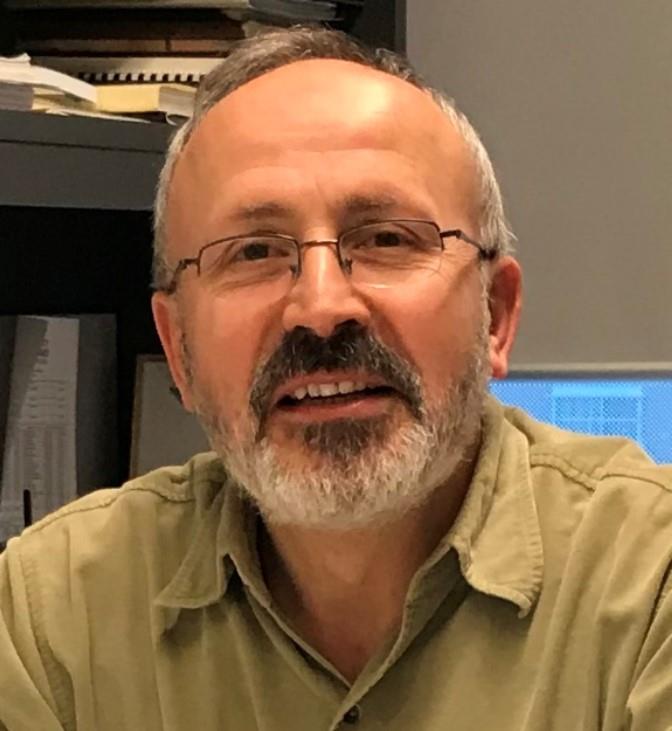Speakers

Vice President for Strategy, International Association for Hydrogen Energy
Vice President, World Society of Sustainable Energy Technologies
Chair, Energy Working Group,
Professor of Mechanical Engineering
Overview of Novel Hydrogen and Ammonia Production Research at CERL
Abstract
For the past ten years we have been performing cutting-edge research on the development, modeling, analysis, building and testing of novel hydrogen and ammonia production systems at the Clean Energy Research Laboratory (CERL) in the Faculty of Engineering and Applied Science of University of Ontario Institute of Technology (UOIT). These systems are essentially critical for non-fossil fuels based and hence sustainable solutions for the targeted hydrogen economy and offer carbon-free technologies for the province of Ontario in specific and the world at large. For hydrogen production, the research primarily focuses on thermochemical and hybrid cycles, photoelectrolysis, pohotocatalysis, and photoelectrochemical processes and related technologies. In regards to ammonia production, the focus is essentially put on electrolysis, gasification and electrochemical based systems. Such systems and related technologies are developed to be brought to the commercialization phases for the local and international markets. This particular presentation will discuss all these clean hydrogen and ammonia production systems and related technologies as well as their applications in various sectors, ranging from transportation to industrial.
Biographical Sketch
Dr. Ibrahim Dincer is a full professor of Mechanical Engineering and has specialized in the area of sustainable energy technologies he has authored/co-authored numerous books and book chapters, and many refereed journal and conference papers. He has chaired many national and international conferences, symposia, workshops and technical meetings. He has delivered many keynote and invited lectures. He is an active member of various international scientific organizations and societies, and serves an editor-in-chief, associate editor, regional editor, and editorial board member on various prestigious international journals. He is recipient of several research, teaching and service awards, including the Premier's research excellence award in Ontario, Canada. During the past four years in row he has been recognized by Thomson Reuters as one of The Most Influential Scientific Minds in Engineering and one of the Most Highly Cited Researchers.
1) Jean-Claude Tabet, Emeritus Prof.
Sorbonne University
“Mass spectrometry detection of nitro explosives.”
2) Prof. Dr. Wujian Miao
The University of Southern Mississippi
“Trace detection of explosives based on electrochemical, chemiluminescent, and electrogenerated chemiluminescent techniques.”
3) Assoc. Prof. Dr. Manel del Valle
Autonomous University of Barcelona
“Development of molecularly imprinted polymers for the sensor-based detection of explosives.”
4) Dr. Gonzalez-Rodriguez
University of Lincoln
“Identification and detection of home-made and most common improvised explosives used in terrorist attacks by chromatographic and spectroscopic techniques.”
1) Albay Dr. Mustafa CİVELEK
TÜBİTAK-Savunma Güvenlik Teknolojileri Araştırma Grubu (SAVTAG) Başkanı
“The title of the talk will be decided later.”
2) Albay Dr. Mahmut BAYRAK
ALTINAY Havacılık ve İleri Teknolojiler A.Ş. – Proje Koordinatörü
MSB-Enerjik Malzemeler Teknoloji Paneli Eski Başkanı
“The Preparation of Hydrazines Revisited.”
3) Albay Dr. Nebi GÜL
Başkent Üniversitesi Savunma Teknolojileri Anabilim Dalı Öğretim Üyesi
MSB-Enerjik Malzemeler Teknoloji Paneli Eski Başkanı
“Future Characterics of Energetics Materials (EM)”
4) Yarbay Poyraz Alper ÖNER
Genel Kurmay Başkanlığı
“The title of the talk will be decided later.”
5) Prof. Dr. Ülker BEKER
TÜBİTAK – Marmara Araştırma Merkezi Kimyasal Teknoloji Enstitüsü Müdürü
“The title of the talk will be decided later.”
6) Prof. Dr. Recep ÇALIN
Kırıkkale University, Metallurgical and Materials Engineering Department
“Production of Metal Matrix Composites by Infiltration Method”
7) Prof. Dr. A. Nur ONAR
Ondokuz Mayıs University, Faculty of Art and Sciences, Department of Chemistry
“Electrochemical Sensor for Picric Acid Detection”
8) Prof. Dr. İsmail Hakkı BOYACI
Hacettepe University, Food Engineering Department
“LIBS for Energetic Materials Detection”
9) Prof. Dr. Uğur TAMER
Gazi University, Pharmacy Faculty
“Surface-enhanced Raman substrates for rapid detection of explosives.”
10) Doç. Dr. Emel YILDIZ
TÜBİTAK – Marmara Araştırma Merkezi Kimyasal Teknoloji Enstitüsü (MAM-KTE)
“The title of the talk will be decided later.”
11) Doç. Dr. Alpay TARALP
ALTINAY Havacılık ve İleri Teknolojiler A.Ş. – Yönetim ve Teknik Danışman
“The Preparation of Hydrazines Revisited”
12) Doç. Dr. Derya DIŞPINAR
Istanbul University-Cerrahpaşa, Metallurgical and Materials Engineering Department
“Development of domestic alloys for use in defense industry applications.”
13) Doç. Dr. Ümit ÖZER
Istanbul University-Cerrahpaşa, Mining Engineering Department
“The Uses of Explosives in Civil Purposes: Some Case Studies”
14) Doç. Dr. Sedat BALLIKAYA
Istanbul University-Cerrahpaşa, Electrical and Electronics Engineering Department
“Recent Development in Thermoelectric Materials, Thermoelectric Application from Space to Military”
15) Doç. Dr. Beril ANILANMERT
Istanbul University-Cerrahpaşa, Institute of Forensic Sciences
“Explosive Analysis Method-Development Studies in the Institute of Forensic Sciences: Evolution of the Methods For Faster Analyses, Higher Recoveries”
16) Dr. Gürkan Atınç YILMAZ
TÜBİTAK – Savunma Sanayii Araştırma ve Geliştirme Enstitüsü (SAGE)
“Alternative Inert Plasticizers for Polymer Bonded Explosives”
17) Dr. Nadir SERİN
TÜBİTAK – Savunma Sanayii Araştırma ve Geliştirme Enstitüsü (SAGE)
“The title of the talk will be decided later.”
18) Dr. Melis KESİK MANCAR
ROKETSAN A.Ş. Katı Yakıt Teknolojileri Birimi, Yakıt ve Patlayıcı Teknolojileri Müdürlüğü
“Evaluation of Network and Mechanical Characteristics of Composite Rocket Propellants Related with Corresponding Dynamic Mechanical Analysis “
